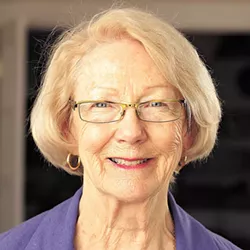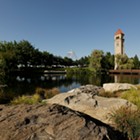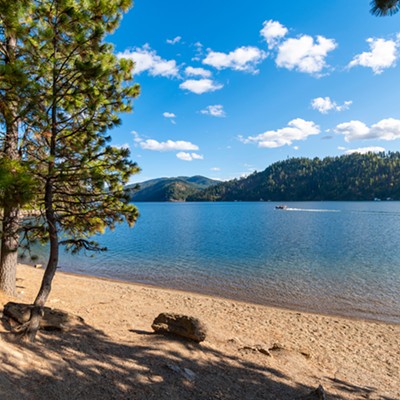Ghosts, goblins and elections work together to create havoc this time of year. While the leaves are turning, politicians are churning up controversies. Candidates are always looking for issues because they need to have something to make speeches about. Ideally for them, that something is controversial and gets voters off the couch and into the voting booth.
In Idaho, urban renewal has been heating up as a controversial issue of statewide interest. Candidates in Coeur d'Alene's city elections were talking all around the edges of the issues these past few months. Should urban renewal commissioners be elected? Should city council members assume the job of running urban renewal projects?
Only Councilman Ron Edinger came right out and said he didn't think urban renewal commissioners should be elected, or that he, as a longtime city council member, even wanted to take on the difficult job of re-visioning his city.
Coeur d'Alene has two urban renewal districts. The Lake District includes much of the downtown business area and extends down the Spokane River to where a cluster of lumber mills once provided employment for a good portion of the population. The Lake District will close its books in 2021. Then there's the Mill District, which extends farther down the Spokane River and will expire in 2027.
Riverstone, in the Lake District, is a shining example of how urban renewal works. The project aimed to rehabilitate an abandoned mill that was categorized as a polluted brownfield with a base valuation of $3.6 million. The Riverstone development has increased the value by $90 million, and the neighborhood now has a cineplex, several restaurants, retail shops, a park, a pond and hundreds of new jobs.
The partnership agreement required Riverstone's developers to pay for the street, water and sewer lines. The developers invested more than $9 million in public infrastructure.
According to ignite cda Executive Director Tony Berns, the developers will be reimbursed by the urban renewal district over time, but only from the new property tax revenue generated by the Riverstone project. If the project does not produce enough new tax revenue to cover that $9 million, the developer will not be fully reimbursed.
You can understand that this method puts all of the risk on the developers and zero risk on the public side. It is a great deal for the public because the developer takes all that risk. And the brownfield mill site has been cleaned up and put to new uses.
Since their Coeur d'Alene beginnings in 1997, urban renewal funds have contributed to the building of a new library, the Kroc Community Center, the acquisition of higher-education-corridor lands, the extraordinary McEuen Park and much more.
So why the controversy? Why the opposition?
One explanation has been given a name: C.A.V.E., or Citizens Against Virtually Everything. The implication is that 10 percent of the people will be against anything new, no matter what.
Urban renewal fuels controversy because it involves those dread essentials of community living — property taxes. And a group of naysayers have never recovered from the conversion of McEuen Field into McEuen Park.
A simpler explanation for opposition is political gamesmanship — jockeying for political power in our small fish pond.
Because urban renewal is not all that easy to understand, the anti-urban renewal crowd gets away with passing out totally misleading information. At a recent public meeting in Coeur d'Alene, for example, two local state legislators, Sen. Mary Souza and Rep. Kathy Sims, handed out leftover 2014 anti-urban renewal pamphlets that included a section called "Facts." Ignite cda's Tony Berns has generously suggested that the "Facts" were not facts, but "Opinions." I prefer to suggest that these legislators are just reckless with the truth.
Here's a new list of REAL Facts:
1. Urban renewal is paid for by brand-new taxes, which are not "our tax dollars." They are collected as a result of the urban renewal project. When the district expires in six years, the new tax revenues will co-mingle with the old, grow larger and then become "ours."
2. It is true that existing taxing districts may feel squeezed by new responsibilities they may take on as a result of new activities in the urban renewal district. But according to ignite cda officials, no taxing districts are complaining. They know the end is in sight in 2021.
3. Requiring voter approval on new projects is simply expensive, unreasonable, impractical and inefficient. Voters would learn to hate it.
4. The Sims-Souza "Fact" sheet disparages investments in education, large parks, art and downtown entertainment. I say hogwash. Here's the secondary benefit of urban renewal. Public art, public parks, fine educational systems, public spaces — all these create vibrant places for people to work and to play. As a result, those public amenities attract new folks and new businesses.
Despite the rumble, urban renewal funds are transforming Coeur d'Alene. The benefit to the public is beyond measure. ♦


















